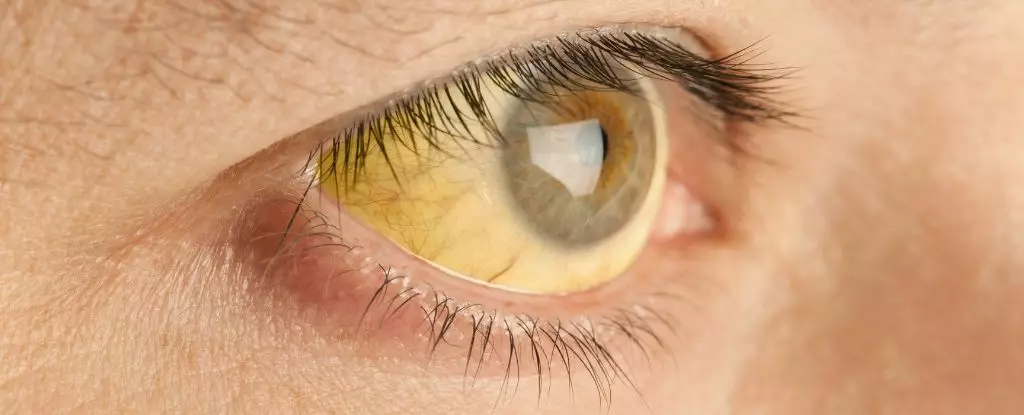In the medical world, jaundice has long been viewed with a sense of foreboding. The yellowing of skin and eyes, fueled by the presence of bilirubin, serves as a stark warning signal of underlying liver dysfunction. For centuries, this accumulation of bilirubin has been positioned as a perilous state, with the potential for brain damage looming in the background. However, breakthrough research is starting to revolutionize our understanding of this compound—not just as a marker of illness, but as a formidable ally against one of humanity’s deadliest diseases: malaria.
The recent findings led by Johns Hopkins molecular biologist Bindu Paul may pivot the narrative on bilirubin dramatically. Traditionally regarded merely as a waste product, this compound is being redefined as a potential defender against infectious threats. While the shadow of jaundice still casts a dark influence, new insights challenge its negative connotations. As malaria infections soar to over 260 million annually, with the World Health Organization reporting more than 600,000 fatalities each year, the search for effective treatments becomes ever more urgent. Could bilirubin be a critical component in combatting this lethal parasite?
The Malaria Connection
Malaria, transmitted predominantly by the infamous Anopheles mosquito, wreaks havoc on the human immune system, particularly through the Protozoan parasite Plasmodium falciparum. Once inside the bloodstream, this parasite infiltrates red blood cells, multiplying to catastrophic levels before causing the cells to rupture and release toxic heme, which can worsen the already dire condition of the host. High levels of iron from this burst can mean death for many afflicted. But intriguingly, the latest study found that bilirubin may offer a buffer against the toxic tide unleashed by malaria.
The evidence presented is illuminating but begs further scrutiny: when comparing blood samples from a cohort of 42 volunteers infected with P. falciparum, the asymptomatic patients exhibited tenfold higher levels of unconjugated bilirubin than their symptomatic counterparts. This is a powerful assertion, suggesting that bilirubin might be more than merely a byproduct of suffering—it’s a vital protective agent.
Lessons from the Lab
Delving deeper, the research transitioned from human subjects to the realms of rodent experimentation, unveiling an even clearer narrative. Mice lacking bilirubin were overwhelmed by the malarial parasite, while their counterparts—normal mice with functioning bilirubin production—thrived despite infection. The Protecting capacity of bilirubin proposes a fascinating evolutionary story. Clearly, this mechanism could represent an ancient, biological response to fend off the destructive nature of Plasmodium.
What sets this study apart is its implication of bilirubin’s role beyond mere pathology. Rather than exclusively being a detrimental side effect of sickness, bilirubin appears to challenge infection. The biochemical interactions between bilirubin and the parasite disrupt Plasmodium’s organelles responsible for nutrient absorption, effectively starving it. This dynamic not only offers insight into human health but could also rewrite a significant chapter in human evolutionary history.
The Ethical Implications of Evolutionary Trade-offs
But as the narrative surrounding bilirubin evolves, it provokes ethical contemplations. The research equates the beneficial effects of bilirubin in combating malaria with the adverse outcomes of neonatal jaundice, a condition that can inflict lasting neurological damage. Where onward from here? Understanding this complex interplay of health and disease could enable the development of treatments that exploit bilirubin’s protective qualities while minimizing risks.
The potential for harnessing bilirubin in malaria treatment opens the door to a new frontier in public health, especially for regions plagued by the disease. However, the complexity of this compound demands nuance in application; the balance between utilizing a natural defense mechanism and mitigating its risks will be paramount. The success in translating this scientific breakthrough into clinical practice could ultimately hinge on the medical community’s readiness to re-evaluate preconceived notions surrounding bilirubin, allowing it to shine in newfound glory.
As we stand at this intersection of medical science and ethical discourse, it’s imperative we remain open-hearted and inventive. The fight against malaria—armed with the fortitude of bilirubin—could rewrite the plight of millions, turning a mere waste product into an invaluable hero in our ongoing battle against infectious disease.


Leave a Reply